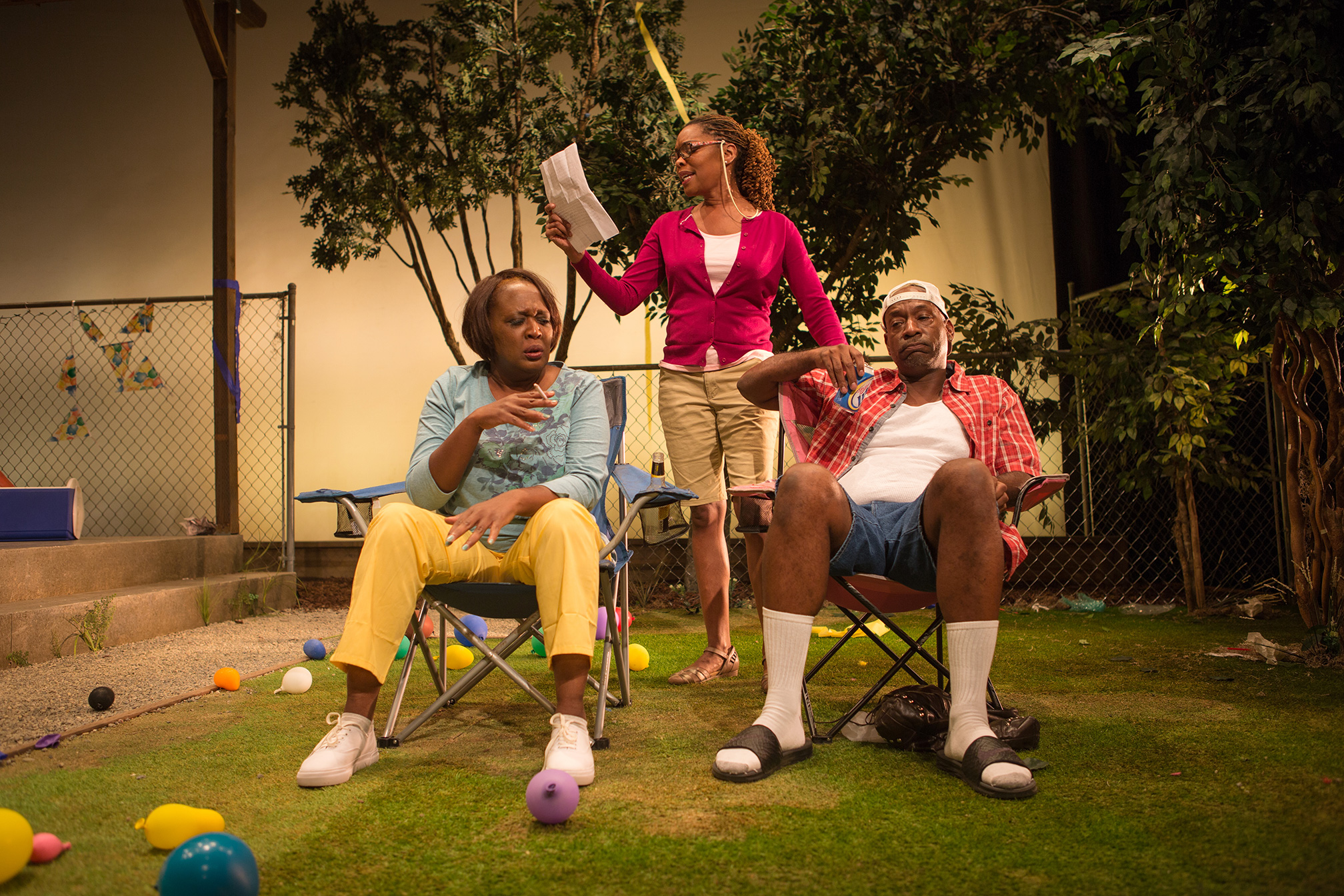| Custom Made Theatre photo by Jay Yamada |
It turned out that the most convenient time to see it was the weekend after Thanksgiving, at a matinee, and tickets were not exactly selling like hotcakes. But we decided to take the plunge and see what we got.
The Play
I think in the right hands, this could be a pretty interesting play. King Henry II has lost his favorite son (also named Henry) very young, and he's not terribly keen on any of his three remaining sons (Richard, Geoffrey, and John). Nor is he particularly fond anymore of his wife and queen, Eleanor of Aquitaine, who has been in prison for the last decade or so. He's quite fond of Alais, a French princess brought to his household by a treaty as a wife for Richard, though that hasn't happened yet. And Phillip, the young king of France, has come at Christmas to discuss that matter.So Henry needs an heir, but hasn't named one. We get lots of political and family machinations around which of the sons should and will get the throne, along with a lot of verbal sparring between Henry and Eleanor, something they have clearly perfected over the years (and which draws the comparisons to Virginia Woolf).
There are plenty of twists and turns and such to keep one's interest, though the ending isn't all that satisfying (and isn't that what we want from a holiday show?).
The Production
The set is simple, which is good. It's clearly meant to be a medieval castle, or at least as muc of one as can fit on the small stage at Custom Made. But it's fine for the size of cast and amount of action. And the costumes, designed by Brooke Jennings, are excellent: not flashy, but evocative of royalty of the period. The sound, though, wasn't good. After intermission there is a small fire burning at center stage, and I heard pops and crackles coming from a speaker way off to the side, which was very distracting. And unfortunately, much of the sound design was overwhelmed by a buzzing from the lights or something overhead. So the production itself is kind of a mixed bag.The acting covers quite a range, too. Eleanor (Catherine "Cat" Leudtke) is quite solid, and though he started our performance pretty flat, Henry (Steven Westdahl) managed to stay with her most of the way, though his range is more limited. Alais (Caitlin Evenson) started pretty strong, but kind of disappears later on. And the three competing sons don't seem to know they are in the same play. Richard (Elliot Lieberman) is stoic, yet angry. Geoffrey (Kalon Thibodeaux) is reserved and calculating. John (Luke Brady) is a whining, petulant child. Yet somehow I'm supposed to believe that they are fighting for the throne of the largest and most powerful empire in Europe.
Eleanor's favorite is Richard. Henry's (for inexplicable reasons) is John. There are valid political arguments complicating the case for either, but temperamentally, there is no question who ought to get the crown. (Hint: his nickname is "Lionheart".) In the hands of a different director, this might be an interesting struggle over geopolitics. But as staged by director Stuart Bousel, we see melodramatic arguments over important matters, but ultimately the question seems painfully obvious: Richard is suited to be a king, Geoffrey can be useful, and John is a ninny. Yet somehow we fight over whether to give John the crown, the princess, etc.
Bottom Line
This play ought to be more interesting than it is. Either a different cast or a different direction could probably take the script and turn it into something both fun and interesting. But this effort is only mildly fun or interesting. So I came away disappointed.This isn't the holiday treat I was hoping for. It was a mildly diverting production marred by some inexplicable casting and directorial choices, plus some really bad tech in the sound department.
Still, there were a fair number of people in attendance today, and the show has been extended a week to December 9. So if you're looking for something a little different for the holidays, you have more chances to see The Lion in Winter. Just don't go in with your hopes too high.
